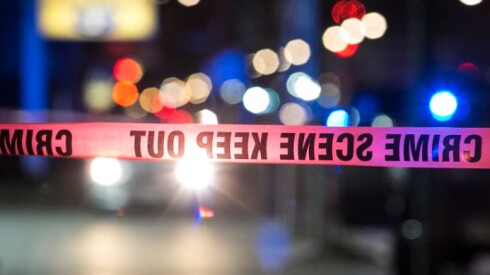To sit here in this garden alcove, with its stone pathway and bench, surrounded by greenery, is to be reminded of what college, at its idealistic best, is all about.
Pondering, analyzing, sifting ideas in quiet contemplation — this is how young students grow into adulthood. This is the fleeting luxury of higher education. This is how informed, moral leaders of tomorrow can be made.
At least, that’s the college hope. Even an old person hopes yet.
I’m outside Northwestern’s old, ivy-covered Deering Library, which in 1973 was superseded by the poured-cement, futuristic-looking university library nearby. But Deering still anchors the Evanston campus along Sheridan Road, standing above the meadow like a shepherd guarding his flock.
I’m here a couple of days before the news conference about hazing was held Monday at the Westin Chicago River North Hotel, wherein attorneys Ben Crump, Margaret Black and Steven Levin announced that, well, lawsuits against Northwestern for the athletic-department mess are just beginning.
Football was the foremost culprit. But according to the attorneys, hazing was a part of many sports, including baseball, women’s soccer and cheerleading. Even — if you can imagine — the mascot, Willie the Wildcat, allegedly was a victim.
Crump called this the ‘‘athletic #MeToo movement.’’
Perhaps it is. Victims nationwide will come forth. Careers will be ended. Money will be paid. And lurking out there, like a hammer in the dark, is the threat of criminal charges, even prison time, for somebody, somehow.
Remember how Harvey Weinstein’s fate galvanized the original #MeToo movement?
In a few minutes, I’ll be taking a tour of the university’s underground stored archive with library archivist Kevin Leonard. Old football treasures abound. But now I’m thinking only about the hazing.
How and why did this happen? Players abused, revered coach Pat Fitzgerald fired, the football program in chaos. It simply doesn’t compute.
How did an elite school go from virtuous to corrupt overnight?
In my garden reverie, answers have occurred to me.
The scandal happened as bankruptcy happened to Hemingway’s Mike Campbell in ‘‘The Sun Also Rises,’’ a book we studied here many years ago. That is, two ways: slowly, then all at once.
The all-at-once is easy: A football player made a complaint about continued locker-room hazing, an investigation was done by a Chicago law firm and the dynamite blew up.
The slowly part is complicated.
There was a rah-rah, decorated coach who perhaps had been at Northwestern long enough — 27 total years as a player, assistant and head coach — to think he was invincible, the King of Purple, not governed by normal rules.
Obviously, there was a leadership vacuum. And it started at the top.
First, university president Morton Schapiro retired in 2021. His replacement, Rebecca Blank, died before taking office. Current president Michael Schill then was hastily grabbed from Oregon and officially has been in office only since February.
Longtime athletic director Jim Phillips left Northwestern in 2021 to become the commissioner of the ACC. His replacement, Mike Polisky, lasted nine days. Northwestern then quickly snagged Derrick Gragg from Tulsa.
So, oversight? Not much.
But why the hazing, which has been described as ‘‘horrific’’? Why at near-Ivy League-level Northwestern?
Why?
It’s clear that once the hazing had started years ago — nudity, humiliation and threatening power being the main ingredients — it continued unobstructed. Thus, it could seem like ritual, like culture being observed, no matter how depraved.
Former player and plaintiff Lloyd Yates said he and others had heard about the hazing during visits to Northwestern when they were still in high school. It terrified them.
Culprits call hazing a form of bonding. It’s not, except that it bonds with shame.
This wasn’t done to unite; it was done to demean, to emasculate, to show that the victims are not free, that their dignity belongs to the abusers.
And a dark irony? Those hazed will, in time, become the hazers. Because the worst hazing was done to freshmen by upperclassmen. Those freshmen become seniors, continuing the drill.
When I played at Northwestern, freshmen were not eligible for the varsity team. Freshmen had their own team, their own schedule. They never mingled with the 21- and 22-year-olds. We were teens. We were clueless, raw meat. We had no hazing.
That all changed in 1973, when the NCAA said freshmen were OK for the varsity in men’s football and basketball. Boys stupidly were thrown in with men.
At Northwestern, that led to anarchy.
I’m off to the library archives now. There are wonders in that vast subterranean closet that contain the history of Northwestern.
Someday, the hazing scandal records will be there, too.





